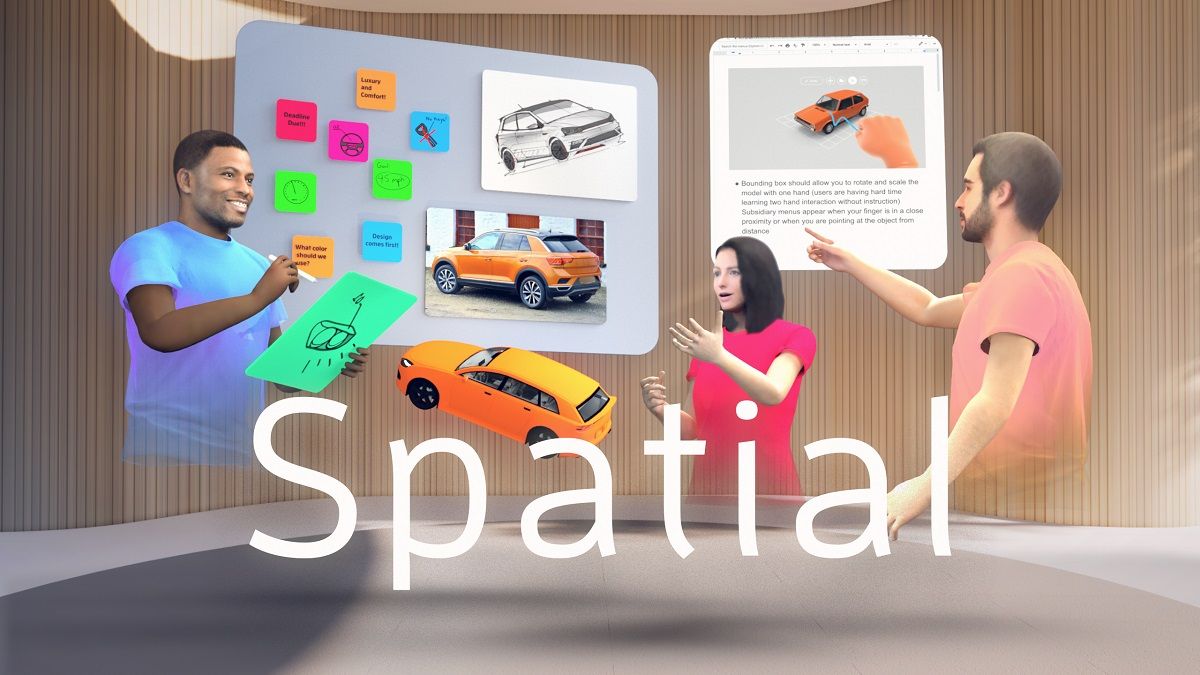Virtual Reality has fallen off interest cycles, with the conversation leaning towards the more beginner-friendly Augmented Reality. But with 2020 being largely shaped by the COVID-19 pandemic, it might be worthwhile revisiting VR and the potential for influence it has for our lives. Spatial is a company that made headlines at CES 2020 for its hardware-agnostic VR and AR-based software, which allowed workers to communicate with holograms and virtual objects. Now, Spatial has launched its VR meetings app on Facebook's Oculus Quest store.
Spatial's VR/AR collaboration platform/app essentially turns any room into a 3D workspace, and it is now making its way to the Oculus Quest Store. This makes the app much more easily accessible on one of the most widely used headsets currently. Spatial is also announcing a lot of new features that will take the immersive collaboration and level it up -- including integration with Slack, Google Docs, Figma; a new whiteboard tool for note-taking, improved text readability, embedded web pages, hand tracking, multiple video conference feeds, and some more. The idea behind these changes is to more accurately support in-person as well as digital collaboration.
We constantly look to our customers to hear how to make the experience more personal and expressive for them - we want to make it so intuitive that it barely feels like work at all. Our power users spend several hours a day in Spatial, showing we are on a trajectory for holographic collaboration that not only replaces major meetings but transforms the way we work throughout the day, mirroring how we might interact with others in a physical office. Being featured on the Quest Store with our latest and greatest experience is a huge moment for us, as it breaks down the barrier to entry to a device that continues to be where we see our highest number of users.
The complete list of changes in the new update are as follows:
- Cloud integrations to bring Slack, Google Drive and Figma into VR - Automatic importing of your Slack channels, Google docs or Figma boards right into Spatial, making it easier to collaborate on the content you care about. No more manual uploads.
- Improved text readability & embedded web pages - Text is now incredibly crisp for screen-shares and web pages thanks to Oculus OVR layers.
- Real-time productivity - Share and capture ideas with the digital note-taking whiteboard tool and pull up and arrange live web pages for real-time editing.
- Expressive hand gestures - Goodbye controllers, you can now interact purely with your hands-on Quest for an even more intuitive interface. Celebrate by clapping your hands or high fiving/fist-bumping a friend and watch the fun particle effects come out.
- Larger room capacity - 20+ participants can join via video feeds from the Spatial web app with no loss in performance, in addition to 30 people in headset, for even larger collaboration.
- Go Pro - Spatial is introducing a Free and Pro version. Go Pro for unlimited storage for your collaborative rooms.
Spatial claims to work across VR and AR-enabled devices including: Oculus Quest, Nreal, Magic Leap, Microsoft HoloLens, and PC and mobile via the web.

